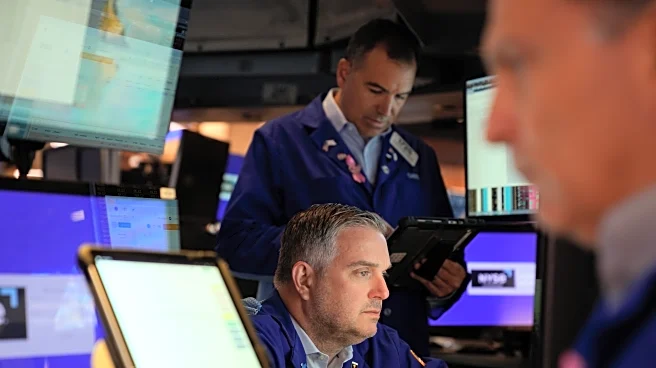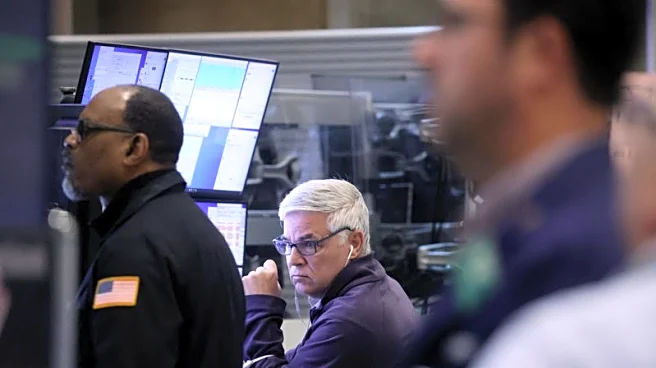What is the story about?
What's Happening?
U.S. companies are anticipated to report milder earnings growth in the third quarter of 2025 compared to earlier in the year, influenced by tariffs and a focus on artificial intelligence investments. Despite President Trump's trade policies, which introduced wide-ranging tariffs, many corporations have managed to exceed earnings expectations. Analysts forecast an 8.8% increase in earnings for S&P 500 companies compared to the third quarter of 2024, although this is lower than the over 13% growth seen in the first two quarters of 2025. The reporting period is set to begin with results from major U.S. banks, and the S&P 500 and Nasdaq have reached record highs, driven by AI-related megacap stocks.
Why It's Important?
The focus on AI spending reflects a significant shift in corporate priorities, with investors keenly observing the return on these investments. High valuations in technology and growth stocks pose risks, especially as concerns about AI investment grow. The U.S. government shutdown has delayed official economic reports, complicating assessments of economic health and Federal Reserve interest rate decisions. Despite these challenges, Goldman Sachs predicts that third-quarter earnings and sales growth will surpass expectations, indicating resilience in the face of tariffs and economic uncertainty.
What's Next?
As companies continue to invest heavily in AI, the upcoming earnings reports will provide crucial guidance amid the information void caused by the government shutdown. Investors will scrutinize commentary on capital expenditures and the payback from AI investments. The Federal Reserve's recent interest rate cut, prompted by labor market weakness, adds another layer of complexity to economic forecasts. The ongoing negotiations and deals in the AI sector, such as AMD's agreement with OpenAI, highlight the industry's momentum and potential impact on future earnings.
Beyond the Headlines
The emphasis on AI spending raises questions about the long-term implications for the U.S. economy and labor market. As companies allocate more resources to technology, there may be shifts in employment patterns and skill requirements. The balance between maintaining profit margins and investing in innovation will be crucial for sustaining growth. Additionally, the interplay between trade policies and corporate strategies will continue to shape the economic landscape.
AI Generated Content
Do you find this article useful?















